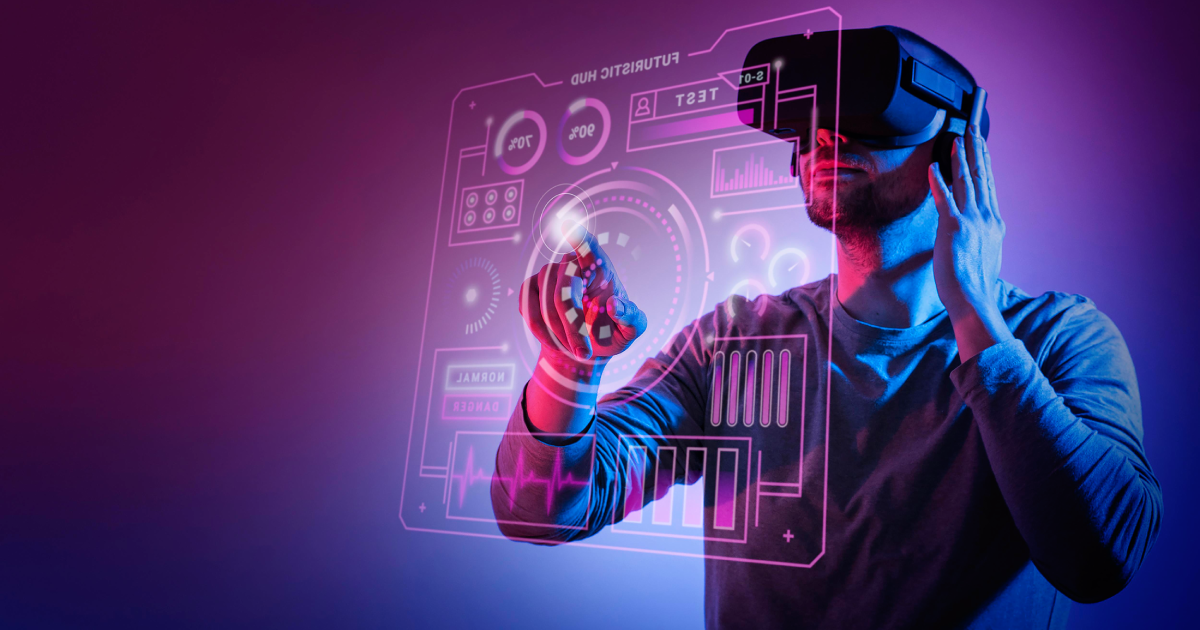How Augmented Reality (AR) Is Transforming the Retail Industry?
There were times when we used to stand in long queues to purchase the products which were time-consuming and a daunting task. But with the advancement in technology, the way to purchase the products have also changed drastically in this market.
Most of the customers prefer the online mode of shopping where they can shop their products at their comfortable location with no time constraints and without a need to go out in a mall or store. As the customer demands are changing frequently, so are the trends associated with the Retail industry.
One of the crucial things which should be considered is customer satisfaction and enhanced experience. At present, customers are looking for personalized experience and convenience with the brands which retailers should take into consideration and meet the increasing demands of the customers by implementing next-generation technologies to their businesses.
Moreover, within a decade we can expect the Retail industry to change in a greater way than it has already changed in the present. Augmented Reality is one such technology that can make this happen. Added, the integration of Augmented Reality, Virtual Reality, and Artificial Intelligence can help in building a better future and making everything closer to the fingertips.
How AR can be a great option to meet the present demands of the Retail sector?
Augmented Reality (AR) has changed the way businesses interact with customers by offering rich opportunities for a personalized and seamless experience to them. As the customer needs are shifting towards technological advancements, retailers find it difficult to adapt to the changes and meet the expectations of the customers.
So, here are a few ways in which Augmented Reality can be a perfect choice in resolving the needs:
Personalization
When compared to online shopping, customers don’t just view the products, rather they can experience personalization that makes them come back repeatedly. Retailers allow customers to have a seamless experience through personal visual guidance using multiple AR overlays which thereby offers better purchase making decisions.
Self Service
Since there is an increasing rise in information demands, retailers should provide the experience which customers are looking for in their business brand by leveraging Augmented Reality solutions which are delivered specifically for AR in the Retail industry.
Customers can make use of their preferred choice of devices to access any kind of information about the brand, their products, or services without any dependency on their teams, thereby promoting self-service efficiency and enhanced customer satisfaction.
Ease and Convenience
Let’s consider real AR use cases to prove this. Imagine you are sitting at home and virtually trying various products from your favourite business brand without sacrificing your comfort of shopping from your location!!
As said, Online shopping can offer you an experience of browsing various products but it doesn’t offer you the option of trying them in real-time. On the other hand, utilizing Augmented Reality it helps anyone to visualize themselves in all their preferred products, try them, and pick the one which suits them the best!
According to Apple, customers are 11 times likely to buy furniture if they get an opportunity to view how it looks in their home environment with the help of Augmented Reality. Since Augmented Reality is a new concept for a few (around 70% of people between 16 and 44 are aware of this it seems), many customers find it appealing, attractive, and interesting to try new products allowing retailers to get a chance to enhance their sales rate to a greater extent.
Reduced Return Orders
With the complete ability to try all the possible products on the go, Augmented Reality assists retailers to reduce the need to replace the wrong size or products to the customers. Thus, they can visualize any kind of product and choose if it suits them with all their preferences.
This strategy helps customers to make firm decisions regarding the purchase that yields lesser return orders. In this way, as a retailer, you can have happy and satisfied customers to your business that will also help them in sharing amazing feedback to their peers that further results in increased sales and purchases.
Eliminates Language barriers
Although there are plenty of languages across the globe, there are certain barriers involved when it comes to communicating with people of other languages. With Google Translate AR mode, you can view any of the 40 foreign languages in your native one!
Features of AR-based shopping applications optimize the languages in such a manner that it is either region-specific or with the help of AR or AI tools, it can help you in understanding the services. Even if you use printed catalogues, the AR content will guide you in choosing the language of your convenience.
Real-time AR use cases in the Retail industry:
Here are some of the top ways that retailers can consider and integrate Augmented Reality in their business strategy in order to make a plethora of profits.:
Smart Mirrors
Also called as Smart Displays or Digital mirrors have gained crucial importance for AR in the eCommerce industry. These Smart Mirrors make use of Augmented Reality, Artificial Intelligence, and gesture recognition technology in them.
With the combination of these high-end technologies, Smart Mirrors can super efficiently impose clothing on our image-making fitting rooms and help customers in deciding them.
By leveraging these technologies, Smart Mirrors become a virtual changing room similar to the traditional ones and helping the customers to change their outfits in seconds and cherry-pick the one which suits them.
Therefore, customers can try dozens of outfits in multiple combinations without having to go through the regular process of dressing, undressing, and choosing the right fit. Furthermore, it also allows customers to share the picture on social media channels to show off their new look or to ask their friends for suggestions, or even store them for the future.
Checking 3D products at your location
Oftentimes, an in-store experience doesn’t help customers to get a clear perception of how products will look and fit them. One of the possible ways in which AR will transform the retail operations is by providing the customer with an opportunity to view the products at home before they purchase.
One of the real-time examples is Home Depot. They released their project in the year 2015, where customers can see how a paint colour looks like in a room.
Makeup Trials
Undoubtedly, this is yet another best and possible solution which customers can enjoy. Customers always expect proper hygiene that makes them remain in dilemma to buy the makeup products.
Since many people try to apply the same makeup product, there are chances that it can cause skin problems for sensitive people. But with leveraging Augmented Reality, it will allow users to apply any kind of makeup product with just a click on their cameras.
Future of AR in the Retail industry:
Augmented Reality is often termed to be a futuristic technology. But the truth is, it is already here! It has made all its way to various sectors in addition to the Retail industry. The time is not too far where you will be sitting in the comfort of a sofa or sipping a cup of tea or coffee in the kitchen, wearing AR-enabled glasses or browsing through Augmented Reality based applications to shop for everything you require! And yes, without moving out of your convenience undoubtedly!
The present challenges in Augmented Reality should also be worked on in order to reach a huge number of audience and attract them irrespective of any kind of industry. Factors such as Advertising, Localization, incentives, discounts, interaction, personal approach, privacy, and UX will be improved for the future.
To Close:
Without doubts, it is important to consider how Augmented Reality would perfectly suit your business needs! In order to create a sustainable and long-term profitable strategy, you can consider the benefits of this technology and leverage them which can offer your customers an enhanced customer experience and experience everlasting success.

